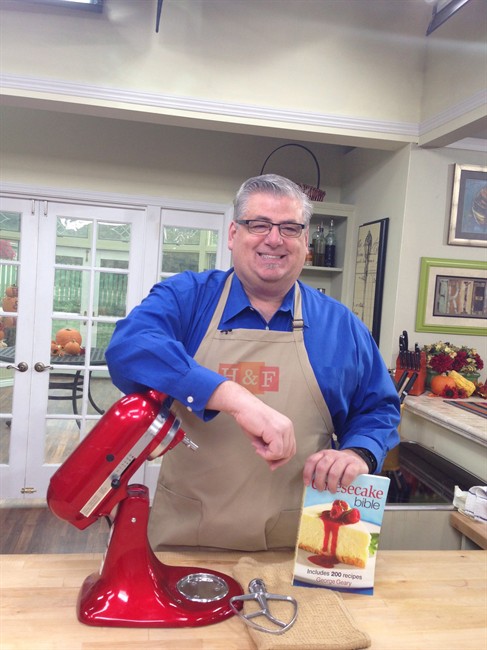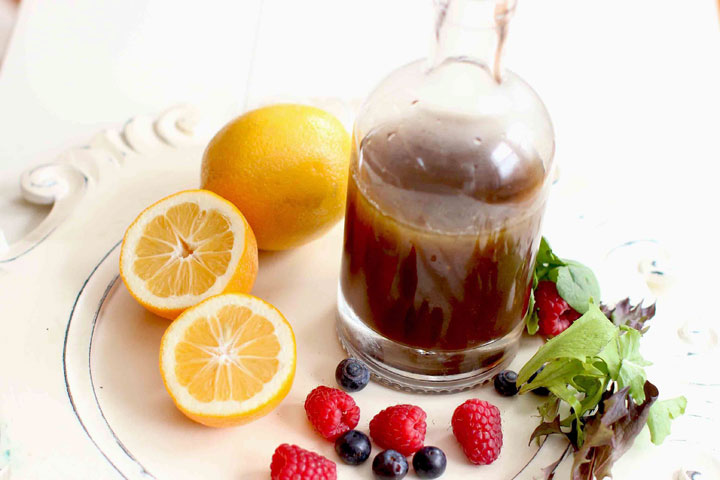LONDON, Ont. – Let’s be honest: Without dressing, some salad components are little more than glorified rabbit food.

But a great salad dressing can make memorable even the most humble ingredients, and there are no dressings easier to create and with more potential variations than vinaigrettes.
Suitable for both green and pasta salads, sometimes used as a marinade for meat and capable of being served warm or cold, a vinaigrette – from the French “vinaigre,” literally meaning sour wine – is basically just a sauce made with oil and vinegar, plus maybe a little sweetener, some herbs, pepper and other flavourings.
In his cooking classes about salads, the first instruction George Geary gives students is: “Throw out the old bottles of dressing.
“I look at all those ingredients in commercial dressings and they’re just crazy,” says the California-based food educator, TV host and author of nine cookbooks, including 2010’s 350 Best Salads & Dressings.
READ MORE: Say goodbye to store-bought with these homemade vinaigrette recipes

“Not that I’m a health-crazy person, but I don’t even know what a lot of those things are. And commercial dressings last for months and months. That scares me.”

Get weekly health news
With homemade, “they don’t have any preservatives in them and you know what is going into the dressing.”
Dietitian Andrea Miller of Whitby, Ont., agrees.
Flavour, nutrition and cost are all compelling reasons to make your own vinaigrettes, says the spokesperson for Dietitians of Canada.
With homemade, “you can add whatever ingredients you want to complement a salad and based on personal tastes.”
READ MORE: Tips and tricks for making vinaigrettes, flavoured oils and vinegars
Nutritionally, “you get to choose what and how much goes in it, versus a store-bought one, where the manufacturer gets to choose. It allows you to modify the nutritional profile of your salad dressing based on your own nutrition goals,” says Miller.
Cost-wise, it can be much less expensive to make your own, she adds.
The most daunting task for cooks new to vinaigrettes may be narrowing the choice of ingredients.
Geary used a total of 14 different oils and vinegars in the recipes in his books. But he always starts with the basic ratio of two parts oil to one part vinegar.
“If you’re doing it for the first time, red wine vinegar is probably the best to get,” he suggests. And it doesn’t have to be the most expensive brand.
The type of oil is a matter of taste. Geary sometimes prefers a nut oil – peanut, walnut or pistachio – for a pasta salad.
“If I want to stay on kind of a neutral plane with my dressing, I’ll go with the canola,” which has a mild taste and allows the other flavours to shine. Extra-virgin olive oil can be used as long as the cook remembers its taste may dominate the dressing.
Geary doesn’t always add a sweetener to his vinaigrette, but if he feels it needs a boost, he might add a sprinkling of sugar with his fingers, especially with apple cider vinaigrettes.
Like Miller, he uses fresh herbs when making an infusion but dried herbs when making the vinaigrette itself.
“Fresh herbs don’t give as much flavour and you have to use more.
“Take a basil leaf. Even if you slice it correctly, it still gets brown and you can’t get it fine enough. So it doesn’t look that good in a dressing. The same thing with peppers.”


Comments